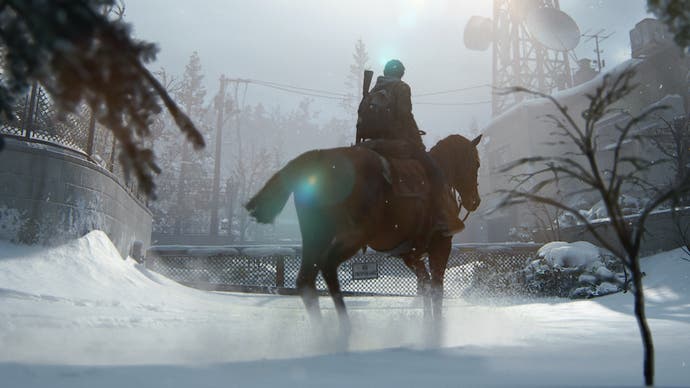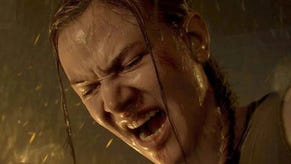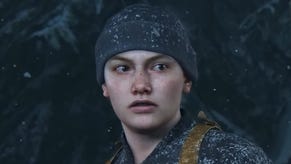The Last of Us Part 2 is faithful and finessed
Spoiler-free impressions from two hours of Naughty Dog's sequel.
Where to start after playing two hours of The Last of Us Part 2? How exactly to talk about a sequel to one of the last decade's most beloved games - if not the most beloved - without spoiling a story beat that's best experienced first-hand, or sharing too much? By now, you'll surely know the set-up: Ellie has been shifted into the central role, seeking revenge after some horrendous, as-yet-undisclosed incident. There is violence - lots of it - and there are moments of downbeat beauty in its exploration of love and hate and how the two play against and into each other.
And there is a game that feels, at the outset, very much like its predecessor. As it probably should. This is a sequel that finds itself in a peculiar predicament for a video game: as the follow-up to a tale so beloved, this was never going to be about putting brash new features on the back of the box, and more about staying true to a world and characters so many are invested in.
But if we're going to start anywhere when talking about two hours spent with The Last of Us Part 2, it may as well be the dogs. If this wasn't the follow-up to one of gaming's most sombre blockbusters, it's exactly what I'd suggest to put on the back of the box to sell this sequel, because the dogs change everything.
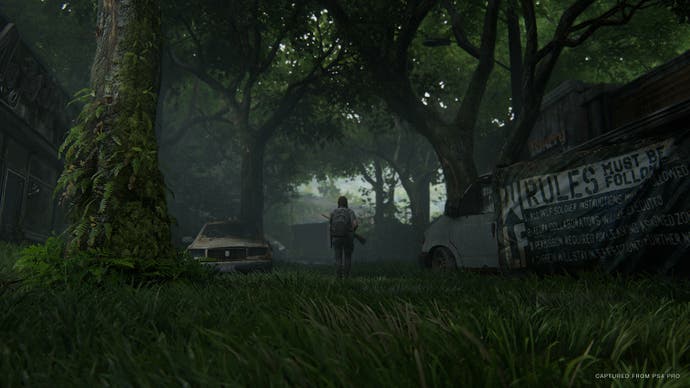
They track you down, tracing your scent (visible via a small trail when you switch to Listen Mode) and slowly reeling you in. When a pooch is in play you're always on your feet, giving stealth a new tempo and giving enemy encounters a punchy focus. They're absolute nightmares to come up against, and at the same time they're also where you'll see The Last of Us Part 2's emotional core bleed into its systems.
Because, on a base level, shooting dogs isn't nice. And The Last of Us Part 2 lets you know that shooting dogs isn't nice - each one will be accompanied by its owner, who'll cry out in anguish if you down their puppy, to prove that they're NPCs with their own emotions and inner lives (and, to further reinforce the point, their own names, with NPCs calling out to each other in their own moments of chatter).
Speaking of dogs evoking emotions and NPC grunts with their own feelings puts us firmly in Molydeux territory, though of course here those emotions are also precision engineered by the story. I won't go into spoiler territory, but will provide some context to the action. The first half of the two-part demo presented to press was taken from very early in the game, where Ellie has settled into what passes for everyday life in the world of The Last of Us. She's in Jackson, Wyoming, a town that functions as well as it can, with a modest population, a school and a fragile sense of community. It's a slow, intimate introduction, reminiscent of DLC episode Left Behind as it focuses on the relationship between Ellie and friend Dina, already a focus of E3 2018's trailer. This is the night after that barn dance, the two going out on patrol in the snow-frosted wilds beyond the limits of Jackson.
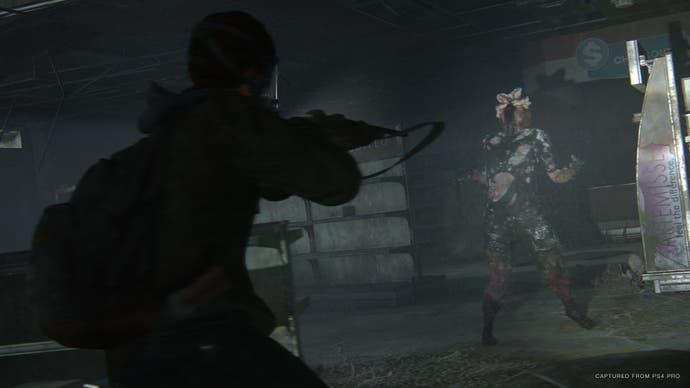
There's slow plodding along a narrow path, this time on horseback, while two friends gently chat to each other. The interactions between the pair are, as is often the case with Naughty Dog's games, full of spark and tension, helped along by naturalistic performance and writing. The world, with its post-apocalyptic beauty, sports a well-worn aesthetic, but The Last of Us Part 2 wears it well. The outskirts of the town are full of incidental spaces to explore, all told with detail and splendour. Break into a supermarket and thick volumetric clouds of spores are illuminated by rays breaking through barricaded windows. Get stranded in a snow storm and the road signs shiver and shake in the bitter wind.
As a piece of interactive theatre, it's effective - and as a continuation of the style, tone and, perhaps most importantly, inner truth of the characters of The Last of Us, it's absolutely spot on. It's the second part of the demo, culled from later in the game and well after Ellie's own path to revenge has started, that's much more effective at underlining where the changes have come in Part 2.
It's a combat heavy sequence, and a reminder that The Last of Us takes a systems-heavy approach to its combat. The embellishments here are many, and welcome - you can now go prone as well as crouching, strengthening the options when it comes to stealth. Ellie now has a shiv on her at all times, meaning it's often a more appealing option to go softly towards enemies then not-so-softly towards their necks. There's a dedicated dodge button, most useful when in close-quarters combat as you duck and dive in fights that, while not exactly Arkham-style, have an effective choreography of their own.

The options on offer, and the ease with which you can slip between them, reminds me - and there's really no greater praise - of playing as Metal Gear Solid 5's Snake, even if it's not quite as graceful. Perhaps that's by design, as you fumble in moments of panic, but there are some decisions - having reload and shoot mapped to the same button, as is the case with your sprint and dodge - that can feel a little strange. There's weight to your actions, but also unwieldiness - just as there was last time out.
The scope and scale of levels does feel significantly broader in Part 2, though, with the Seattle suburbs that house this set piece offering a big, wide and open play space (and not so open, handily, when you need to duck into an abandoned house to try and get attackers off your scent). It's a set piece where firearms are scarce and you're forced to rely on melee and a scant few arrows for your bow, and it brings the dynamism of encounters into focus, with enemies moving to flank you and the onus being on making the most of the space available as you pick them off one by one. The AI is exceptional, the human enemies you're up against audibly coordinating with each other in a way that feels convincingly human.
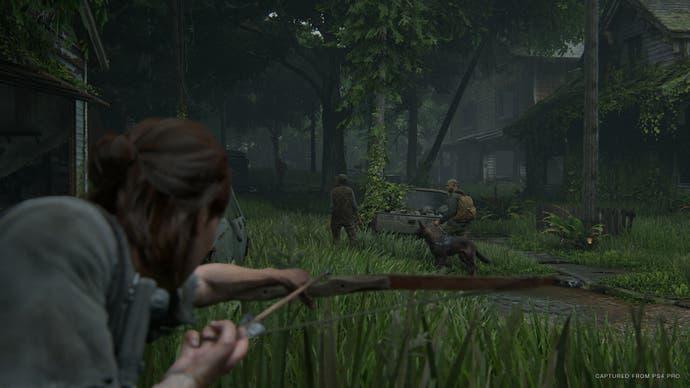
Which, you feel, is the point, even if when seen out of context can be a confusing one. Here's a game where headshots are met with glorious gibbage, and a game that at the same time goes out of its way to make you feel guilty for popping skulls. The overriding feeling in combat, though - which speaks to a problem with games rather than a problem with this particular one - is gratification. Booby trap the doorway, quickly vault over the balcony, offload a scavenged arrow in the dog then use a hammer to smash the last straggler's head! It all amounts to a very neat, outrageously lavish puzzle game. A very grisly puzzle game, of course, but one in which it's still immensely satisfying to find solutions.
That friction is something that's likely going to be worked through more thoroughly in Ellie's tale of revenge, though it already gives the encounters a defining edge. These are grisly, powerful and emotionally charged things, and a neat reminder that, beyond the hype and expectation placed around so much of The Last of Us Part 2, there's a sturdy little video game that's had some thoughtful tweaks. And it suggests that, even with the weight of expectation on the studio's shoulders, you certainly can teach a Naughty Dog new tricks.
This article is based on a press trip in Los Angeles. Sony covered travel and accommodation costs.
